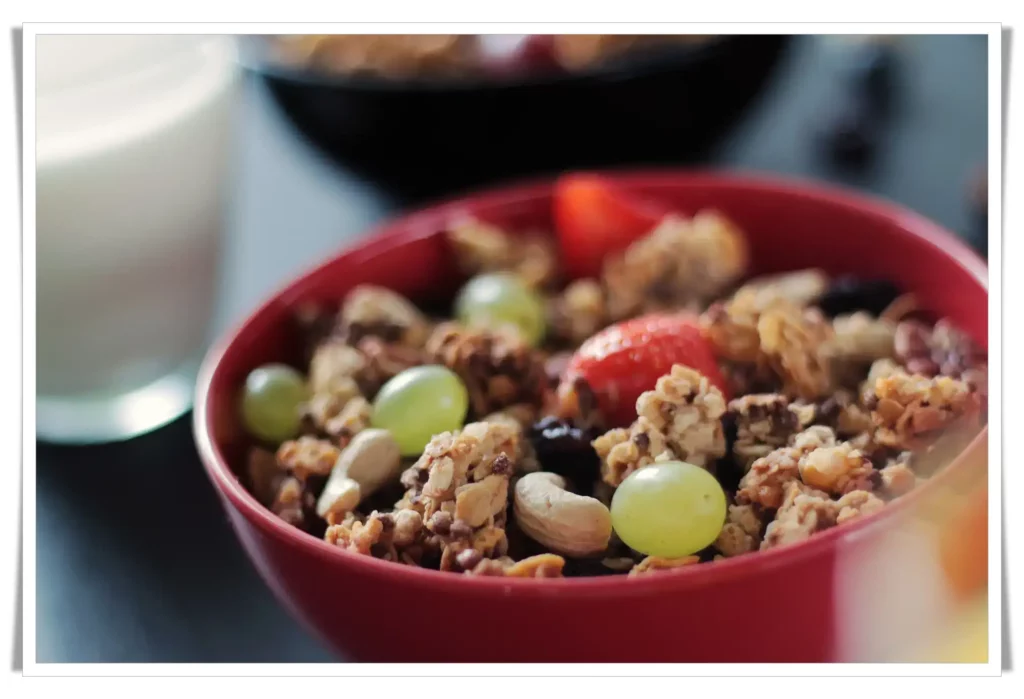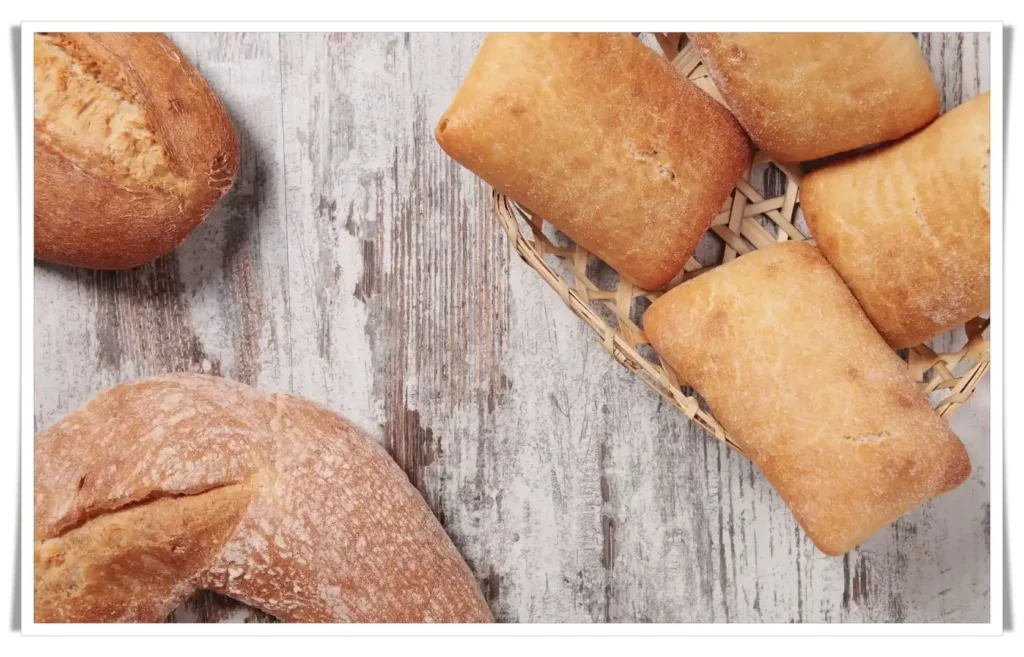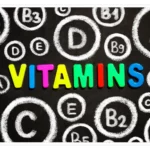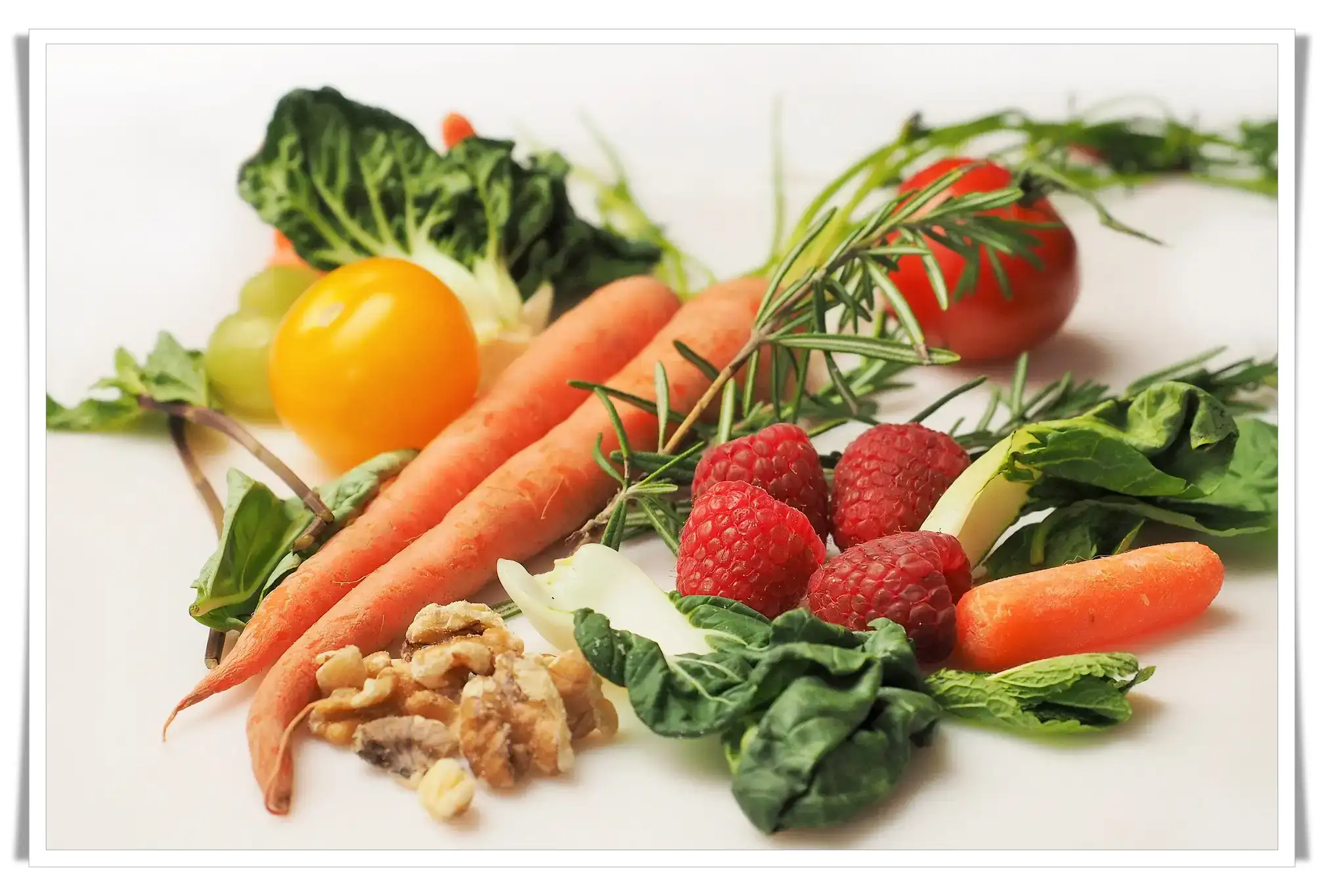The Truth about Bread
What is the truth about bread and what is false? Bread has become synonymous with day-by-day food. In fact, it’s often considered the foundation of a balanced meal. And yet, bread isn’t always good for us. Some types of bread contain high amounts of sugar, salt, and fat. Others are loaded with preservatives and additives.
What is bread?
Bread is a type of food that is made from flour, water, and yeast. It is typically baked in an oven and is a staple food in many cultures around the world. There are many different types of bread, including white bread, whole grain bread, rye bread, and sourdough bread, among others. Bread can be eaten on its own or used as a base for sandwiches and other dishes. It is a good source of carbohydrates and can provide energy to the body.
Please watch the video: The Truth about Bread: 5 Surprising Facts

The Truth about Bread
There are several myths surrounding bread. Many believe that it should only be eaten once a week. Others say that it shouldn’t be part of their daily meals. Still, others believe that bread is bad for them because they eat too much of it.
What are the main types of bread?
There are many different types of bread, including:
- White bread: Made from refined wheat flour, white bread is a common type of bread that is soft and has a mild flavor.
- Whole grain bread: This type of bread is made from flour that includes the entire grain, including the bran, germ, and endosperm. It is typically higher in fiber and nutrients than white bread.
- Rye bread: Made from rye flour, rye bread has a dense texture and a strong, earthy flavor.
- Sourdough bread: A type of bread that is made using fermented dough, sourdough bread has a tangy flavor and a chewy texture.
- Cornbread: A type of bread that is made from cornmeal, cornbread is popular in the southern United States.
- Flatbread: This type of bread is thin and flat, and is often made from flour, water, and salt. Examples include chapati, naan, and pita bread.
- Focaccia: A type of Italian bread that is flat and usually topped with herbs and spices.
These are just a few examples of the many different types of bread that are available.
Please watch the video: The Truth about Bread: 5 Surprising Facts

The Truth about Bread
What Is The Truth about Bread
How much bread is good to eat daily is not a question with a predefined answer. Is it necessarily necessary daily? Are you gaining weight? What happens if I don't eat at all? In reality, the daily consumption of bread must be defined according to several criteria. But it is certain that quality bread is a fundamental food, beneficial for the body.
How much bread is good to eat daily is perhaps the question we ask ourselves most frequently when it comes to nutrition. Bread was and is a staple food for many populations around the globe.
If it is made from refined flour, bread becomes a source of calories and health problems. However, the one made from wholemeal and honestly made flour can represent an important source of macro and micronutrients for the body.
About bread
Daily consumption depends on the type of bread consumed, the type of diet we follow, the lifestyle, age, sex, and weight. Bread is part of the large category of carbohydrates, one of the three big macronutrients, along with protein and fat. In a balanced diet, carbohydrates represent about 50-60% of the total daily calories.
Therefore, in a day we should take about 1000-1200 cal from bread. Considering that 100 grams of bread contain on average about 250 cal, it would mean that we could consume more than 400 g of bread daily. In reality, throughout the day we also consume other carbohydrates as a source of energy – sugar, potatoes, rice, pasta, polenta, flakes, couscous, other grains, etc.
Please watch the video: The Truth about Bread: 5 Surprising Facts

The Truth about Bread
Consequently, the amount of daily bread should be determined according to the rest of the carbohydrates consumed. Nutritionists speak of an average of somewhere around 250 g per day. But if we want to have strict food control, the amount must be adapted to the rest of the food consumed at a meal and what we combine it with!

The Truth about Bread
How do we calculate the amount of bread we need to consume?
In the context of a healthy diet, at breakfast, we should consume somewhere between 300-400 of the total daily kilocalories. If we eat, for example, a natural yogurt, i.e. somewhere up to 100 cal, adding two slices of bread, i.e. about 50 grams, we thus add another 125 cal. Up to the total of 300-400, we can therefore eat something else: either 1 egg - about 150 cal, 20 g of butter, or a spoonful of jam or a slice of cheese.
If we choose cereal flakes, we already have a sufficient intake of cereals, so we can give up bread, for a balanced breakfast, integrating with protein, from milk or yogurt, seeds, then fruit.
Please watch the video: The Truth about Bread: 5 Surprising Facts

The Truth about Bread
In the same way, we can calculate the amount of bread for lunch or dinner. Lunch and dinner should bring somewhere between 500 and 700 cal, and snacks between main meals around 100-200. There are many applications that facilitate this type of calculation if we want to have the food strictly under control.
At the same time, if we made an excess on one day, the solution is to rebalance the balance on the second day through a comparable deficit. Did I eat an extra 300 cal of bread yesterday? Today I'm trying to reduce about 300 calories from the total amount of food consumed, mainly eliminating bread.
The Truth About Bread
How much bread is good to eat daily?
There are no standard recommendations for bread consumption anywhere, all indications are in the context of the general diet. In the latest healthy eating guide, the WHO makes a rough recommendation of 200-300g eating of bread. However, it recommends also, the consumption of cereals and carbohydrates which represent about half of the total calories.
Please watch the video: The Truth about Bread: 5 Surprising Facts

The Truth about Bread
In the United States, for example, the recommendation of the Department of Agriculture is that half of the total daily consumption of grains, which includes bread, be whole grains.
With a diet of about 2000 calories, the recommended consumption per day is about 170 g of unprocessed cereals. For example, from 100 g of wheat transformed into flour, about 150 g of bread is obtained, and the difference of 70 g means an average portion of rice or pasta.
In Europe, the consumption of bread and carbohydrates is a strong cultural trait, and each country has its own recommendations, ranging from very specific to none at all. In official EU documents, a centralized table appears according to the recommendations presented by each country.
Please watch the video: The Truth about Bread: 5 Surprising Facts

The Truth about Bread
The Truth about Bread. The healthiest types of bread.
We saw above how much bread is good to eat in a day, depending on the diet. But what types of bread do nutritionists recommend? What are the criteria on which we base our choice?
- bread made from wholemeal flour and not refined white flour from which the germ has been removed
- grain bread in combination, including rye, which respects the same principle of whole grain
- bread with as few ingredients as possible, ideally only: flour, water, salt, and a raising agent
- wholemeal bread with seeds
- bread with mayo, with slow leavening, with the ideal condition that the composition and procedure by which the mayo was obtained is made known
- bread that has not been semi-prepared and frozen
Please watch the video: The Truth about Bread: 5 Surprising Facts

The Truth about Bread
The most noticeable differences between yeast bread and sourdough bread are as follows: sourdough bread has irregular inner cavities and a much thicker crust.
It also leaves little crumbs, both when we cut it and when we break it. Symmetrically, leavened bread crumbles quickly and with a lot of yeast. Instead, the bread that becomes gummy the next day was obtained with the addition of gluten.
As a successful synthesis of the above criteria, Ezekiel bread comes first in all world rankings. It is a bread with a symbolic, religious value at the same time. It is made from organic wheat, millet, barley, spelt flour, sprouted, and also contains lentils and soy, mandatory with mayo.
The sprouting process causes nutrient levels to increase and anti-nutrients present in grains and legumes to decrease. There is no registered recipe for the brand, and there are many versions where other ingredients can optionally be added.
Please watch the video: The Truth about Bread: 5 Surprising Facts

The Truth about Bread
The Truth about Bread. What happens if you eat too much?
Comfort food par excellence, bread is, therefore, a healthy food. But it is equally true that bread in excess and especially of poor quality brings many disadvantages to health.
Among the problems that excess bread can create are:
- appetite remains – many studies confirm that foods with a high glycemic index increase appetite
- it increases the risk of gaining weight - through the same mechanism above, which basically enters a vicious circle
- it increases the blood sugar level and, consequently, excessive consumption of bread, as a rule, increases the risk of type 2 diabetes
- increases the risk of cholesterolemia, when carbohydrates in the diet are in excess
- digestive disorders and the risk of irritable bowel syndrome increase, the predominant consumption of bread to the detriment of foods containing fiber makes digestion difficult
- we feel bloated, especially because of the considerable amount of salt that bread contains, which causes the tissues to retain excessive water
- increases the risk of depression, especially in the context of menopause
- it increases the risk of nutritional deficiencies
- increases the risk of allergies and intolerances to gluten or starch.
What happens if you don't eat bread at all?
The first visible effect is weight loss. However, it is not about losing weight, because initially only a large amount of water is lost from the tissues. Later, in the context of carbohydrate deficit, the body begins to consume fat. It's the process of ketosis, which can bring with it: feelings of fatigue, weakness, irritability, general sluggishness, seemingly difficult breathing, dry mouth, dizziness, nausea, even vomiting, and insomnia.
It is important to note that ketosis can be a very stressful process on the body and the associated side effects can be severe. To avoid such issues, it is important to make sure that the diet is well balanced and has the right balance of proteins, carbohydrates, and fats.
Additionally, drinking plenty of water and getting regular exercise can help to reduce the severity of the side effects. It is also important to monitor the body closely, as any changes in the body should be reported to a medical professional. By taking these steps, an individual can ensure that the weight loss process is done in a healthy and safe manner.
That's why, nutritionists say, bread and carbohydrates, in general, must be gradually limited if we want to lose weight. The ketogenic diet, meaning no carbohydrates, is still poorly studied and its long-term effects and risks are unknown.
True and false about bread
Bread is fattening. FAKE!
Bread has an average energy intake of 220-240 cal/100g. If we were to compare it with the energy value of the products that are usually eaten with bread, it is "innocent"! Cheese has approximately 250 cal/100g, cheese 350 cal, Sibiu salami 450 cal, and butter 750 cal. Not to mention roe or eggplant salad that goes great with bread and has 2-3 times more calories. Consider that a slice of bread has 60-80 calories, while a tablespoon of oil has 100 calories.
In other words, it's not the bread that makes you fat, but what we put on the bread. And the quantity makes a difference, it's one thing to eat a slice of bread and another to eat the whole loaf!
Please watch the video: The Truth about Bread: 5 Surprising Facts

The Truth about Bread
For a healthy diet, you have to give up bread. FAKE!
A healthy diet means the presence of all groups of nutrients on the plate: proteins, fats, and carbohydrates. At each meal, we must have a portion of starch (slow carbohydrates), i.e. bread or polenta, rice, potatoes, or pasta.
In an ideal plate, vegetables take up half, proteins a quarter, and carbohydrates the other quarter. A balanced diet must necessarily include flour, and bread is the most common and affordable cereal product. The World Health Organization recommends the consumption of 200-300g of bread/day!
Nutritionists forbid bread in slimming belts. TRUE!
The weight loss cure is a special situation, in which the body is put in an imbalance and is forced to burn reserve fat in the absence of an optimal food intake. In other words, the weight loss cure is not a model of a healthy diet, but a strategy for losing weight.
In this context the exclusion of carbohydrates is justified: without carbohydrates, there is no synthesis of insulin, that hormone that transforms calories from food into spare fat. Eliminating sugar and its starches from the diet is a sure way to lose weight. It's just that this is done for limited periods of time, it's not a lifestyle. Don't confuse weight loss with healthy eating!
What is written on the bread label is not always true. FAKE!
Producers in the food industry are obliged to label products correctly and comply with the rules imposed by the authorities. Providing false or incomplete information is punishable by law. You will find both the nutritional table and the list of ingredients in the respective product on the packaging. Ingredients are listed in descending order of their presence in the recipe, including chemicals and additives, colors, and preservatives.
Please watch the video: The Truth about Bread: 5 Surprising Facts

The Truth about Bread
What can be the small "traps" of the label? Using names to hide ingredients that consumers are wary of, for example, sugar can be renamed in over 70 different terms.
There is also an exception: substances that break down during heat treatment must not be labeled, they disappear during cooking/baking, and they no longer exist in the finished product. Therefore, certain enzymes and growth agents may not be listed on the label.
All bread is made from frozen dough. FAKE!
Most bread is made from fresh dough, kneaded, and baked on the day. Then the bread is packaged and goes on the shelf. The only category of bread that freezes is that which will later be baked in a supermarket, restaurant, cafe, or at the consumer's home. The highlight is that this bread is also made from fresh dough, which is then shaped, partially baked (30-50%), and then frozen.
Don't be afraid of the cold, by freezing the bread preserves all its nutritional qualities, the method being practiced gives us the opportunity to enjoy the smell and taste of freshly baked bread. At home, if we bought too much bread, instead of throwing it away, we can put it in the freezer, the cold keeps it fresh.
If you have questions or want to comment, please leave them below and I will answer as soon as I can. Thank you!






Ӏ bloց quite often and I genuinely appreciate your content.
The article hаs truly peaked my interest. I am goіng to take
a note of your website and keep checking for new details aƅout once per week.
I optted in for your Feeеd too.
Here is my web page – 190393514174 (https://num.to/guide/190393514174)
I read your article carefully, it helped me a lot, I hope to see more related articles in the future. thanks for sharing.
I don’t think the title of your article matches the content lol. Just kidding, mainly because I had some doubts after reading the article.
I don’t think the title of your article matches the content lol. Just kidding, mainly because I had some doubts after reading the article.
Your article helped me a lot, is there any more related content? T
Wow, wonderful weblog format! How lengthy have you been blogging for?
you made blogging glance easy. The overall look of your site
is fantastic, let alone the content material! You can see similar: sklep internetowy
and here sklep internetowy
Hey! Do you know if they make any plugins to help with Search Engine Optimization? I’m trying
to get my blog to rank for some targeted keywords but I’m not seeing very good results.
If you know of any please share. Kudos! I saw similar here: dobry sklep
and also here: sklep internetowy